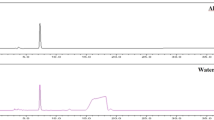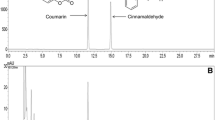Abstract.
The potential toxic and mutagenic action of 2,4-dichlorophenoxyacetic acid has been studied in different test systems, and the obtained results range from increased chromosomal damage to no effect at all. We reexamined the effect of this herbicide by simultaneous using three tests based on yeast, transformed hematopoietic, and mouse bone marrow cells. The results obtained demonstrated that 2,4-dichlorophenoxyacetic acid has cytotoxic and mutagenic effects. The positive response of yeast and transformed hematopoietic cells was verified in kinetics and dose–response experiments. The analysis of metaphase chromosomes indicated a statistically proved induction of breaks, deletions, and exchanges after the intraperitoneal administration of 2,4-dichlorophenoxyacetic acid in mice. The study of phenoxyacetic acid and its differently chlorinated derivatives showed that cytotoxicity and mutagenicity are induced by chlorine atoms at position 2 and/or 4 in the benzene ring. The mutagenic effect was abolished by introduction of a third chlorine atom at position 5. Thus 2,4,5-trichlorophenoxyacetic acid was found to have very weak, if any mutagenic effect; however, the herbicide preserved its toxic effect.
Similar content being viewed by others
Author information
Authors and Affiliations
Additional information
Electronic Publication
Rights and permissions
About this article
Cite this article
Venkov, P., Topashka-Ancheva, M., Georgieva, M. et al. Genotoxic effect of substituted phenoxyacetic acids. Arch Toxicol 74, 560–566 (2000). https://doi.org/10.1007/s002040000147
Received:
Accepted:
Issue Date:
DOI: https://doi.org/10.1007/s002040000147




